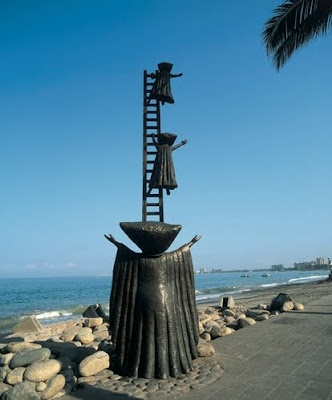
For one of my classes, I had to pick a piece of art and write a poem about it. I found Claudia Drake's Athena digital collage completely intriguing. For me, this image made me think of pealing someone's thoughts apart. What if you had the ability to just look inside someone's head and see their memories through their eyes. Here's the poem I wrote about it:
In a world where communication is tangible,
Language as we know it becomes obsolete
Our minds ripen like fruit, ready to peel
The layers of our being
Across the room is a prosperous man
He puts his head in his hands
and ponders in silence
The things he would never say
Become unwrapped like a present
Like the first present on Christmas
I pull away to reveal
The moments he treasures
The images once only for him
He blankets the death of his daughter.
Her youthful beauty lives in eternity
Within the fortitude of his mind
Outside there is a happy couple
The hold hands gently
while walking in the park
Who would question such love?
Like a fresh orange in the spring
I unpeel what's seen on the surface
The things he thought he hid so well
The memories he never shared
He sheds a matrimonial secret
His mistress's silhouette
Haunts the crevasses of his body
In a humanity stripped of assumptions
Revealing the beauty of truth

















































 The image I chose today is 3D sidewalk art done by Julian Beever. She has done so many incredible pieces. I was looking through them online and every piece is so different. One with a frog, one making it look like you are going to fall through a hole if you walk over it, and the one with the hose. This picture the man is not holding a real hose all of it is drawn and he is placed by it to make it look like he is holding the running hose. It is crazy how real this art makes it look. The great depth in the values makes this really become 3D. After looking through all of these I want to find them and see them in person. It would be crazy to just walk down the street and see something so amazing right below you. They are so interesting and shows that people can do great things with art even if it is drawing one sidewalk.
The image I chose today is 3D sidewalk art done by Julian Beever. She has done so many incredible pieces. I was looking through them online and every piece is so different. One with a frog, one making it look like you are going to fall through a hole if you walk over it, and the one with the hose. This picture the man is not holding a real hose all of it is drawn and he is placed by it to make it look like he is holding the running hose. It is crazy how real this art makes it look. The great depth in the values makes this really become 3D. After looking through all of these I want to find them and see them in person. It would be crazy to just walk down the street and see something so amazing right below you. They are so interesting and shows that people can do great things with art even if it is drawing one sidewalk.


